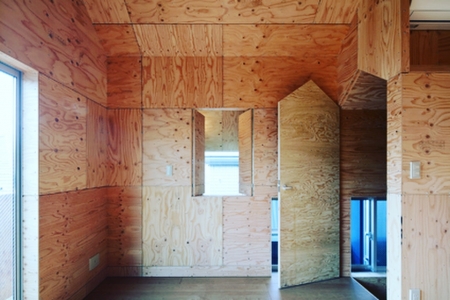デザインの断片
断片的につなぎ合わせたデザインだと、何故か、ポストモダンの建築を思い出す。学生の頃だった、歴史的なデザインをモチーフにして、断片的に、装飾としてつなぎ合わせていた。それでも、学生の頃、参照していた建築はモダニズムの建築だったので、ポストモダンの建築を見る度に違和感しかなかった。
デザインを表層的に捉えて、その操作が建築のデザインの全てあるかのような態度にポストモダンの建築は映り、それがかえって建築デザインに対して、窮屈な想いと、嫌な感じしかなかった。
学生の頃は、建築デザインの精神性のようなことに興味を持っていたし、人の内面にまで影響を及ぼす建築とはどういうものかを考えていたので、表層的にデザインを扱うことはしたくなかった。
それは今も変わらないが、断片的なデザインのつなぎ合わせには興味がある。そもそもデザインは建築と人をつなぐためにあり、人は、人の精神性は、常に一定ではなくて、不規則に変化をするので、その不規則な変化に、動かない建築が応答しようとするならば、ひとつの可能性として、断片的につなぎ合わされたデザインが、その不規則な変化にシンクロするという回答もありうると考える。
ただ、それは決して表層的にデザインを扱うことでは無いので、断片的にせよ、デザインには人の精神性とのつながりや関係性が必要になる。
"Fragments of Design"
The piece-by-piece design reminds me of postmodern architecture for some reason. He used to be a motif of a historical design when he was a student, and pieced it together in pieces and as decorations. Still, when I was a student, the architecture I was referring to was a modernist one, so every time I saw postmodern architecture, I felt uncomfortable.
The post-modern architecture was reflected in the attitude as if the operation were all in the architectural design, taking the design in a superficial manner. .
When I was a student, I was interested in the spirituality of architectural design, and I was thinking about what kind of architecture would affect the inside of a person. I didn't want to.
It remains the same, but I am interested in splicing fragmented designs. In the first place, design is to connect architecture with people, and people tend to change their spirituality irregularly, because they are not always constant, and the immovable architecture responds to the irregular changes. Then, I think that one possibility is that a piece of stitched design can synchronize with the irregular changes.
However, since it is not a surface treatment of design, design requires a connection or relationship with human spirituality, even if it is fragmentary.

